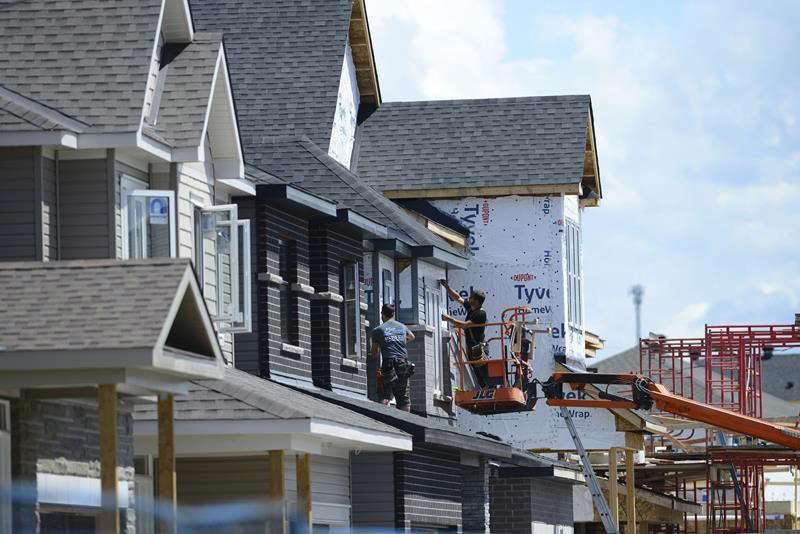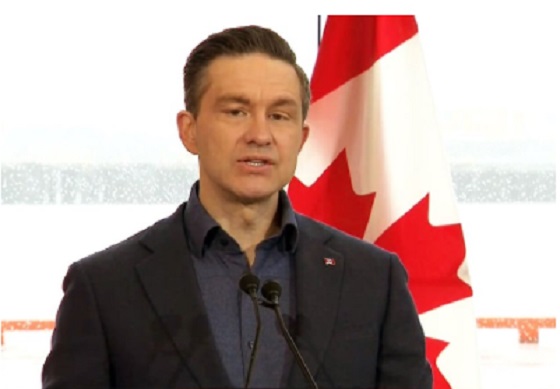Alberta
Addressing affordable homebuilding hurdles

A new Construction Codes Working Group will explore changes to construction codes to help address housing affordability.
As Alberta’s population continues to grow, so does the need for more housing options. That’s why the province has been working to reduce barriers and empower its housing partners to get more shovels in the ground, and get more houses built for Alberta families.
Alberta’s government continues to look at all options to build more homes. To further this work, a Construction Codes Working Group has been created to explore how Alberta’s construction codes can be improved to speed up development while still maintaining the required high quality and safety standards. The working group includes members from government, municipalities and the development community.
“We are leaving no stone unturned in our approach to increase housing options for Albertans. We have already collaborated to streamline some permitting processes, and by continuing to work together we will remove barriers standing in the way of housing options.”
“Albertans need more housing options as the population grows and it’s why we’ve been working to reduce barriers to housing construction. This working group is just another way that our government is working with housing partners and municipalities to accelerate homebuilding across the province.”
Using the expertise and experience of municipal and industry professionals, the Construction Codes Working Group will explore construction code amendments to accelerate the homebuilding process across the province and harness regulatory, municipal and industry expertise to tackle housing development complexities. Examples of code changes the working group may consider include those for secondary suites and single-stair apartments to make housing easier to build.
The Construction Codes Working Group will include representatives from Alberta’s government, the cities of Calgary and Edmonton, the Safety Codes Council, and the Building Industry and Land Development Association (BILD) Alberta. The Safety Codes Council will ensure safety codes officers are trained on any new codes, inspections or approval processes. BILD Alberta will give insight into market conditions and development challenges.
“In the face of unprecedented population growth, we need an ‘all hands-on deck’ approach to build more homes and meet the growing demand. The Construction Codes Working Group unites experts to streamline construction processes while maintaining top safety standards. I look forward to the insights and recommendations from this working group and am confident a collaborative approach will help deliver more housing options for Calgarians.”
“The City of Edmonton is proud to be a member of the new Construction Codes Working Group. As Edmonton continues to experience unprecedented growth and an increased demand for housing, we are eager to explore new and innovative ways to streamline the development process to ensure every Edmontonian has a home.”
On May 1, Alberta formally updated its provincial building and fire codes to align with national codes and allow for improved energy efficiency in housing and small buildings, while still emphasizing consumer affordability. The Construction Codes Working Group will build on this work to address additional pressures and development challenges found in Alberta’s housing market.
“As a member of the Construction Codes Working Group, BILD Alberta is proud to support the development of solutions that balance building code requirements with housing affordability. By collaborating with key stakeholders, we aim to identify innovative, practical changes that prioritize safety, efficiency and accessibility while addressing the pressing housing needs of Albertans.”
Quick facts
- The 2023 Alberta editions of the building and fire codes and the 2020 National Energy Code for Buildings came into force on May 1, 2024.
- The creation of the Construction Codes Working Group supports the goals of Alberta’s Housing Action Plan by looking at ways to cut red tape that are creating delays in affordable construction.
- The 2024 Accessibility Design Guide that was recently released includes detailed information and context to help the public and construction industry understand and apply the provincial building code’s accessibility requirements.
Related information
Alberta
Alberta takes big step towards shorter wait times and higher quality health care

From the Fraser Institute
On Monday, the Smith government announced that beginning next year it will change the way it funds surgeries in Alberta. This is a big step towards unlocking the ability of Alberta’s health-care system to provide more, better and faster services for the same or possibly fewer dollars.
To understand the significance of this change, you must understand the consequences of the current (and outdated) approach.
Currently, the Alberta government pays a lump sum of money to hospitals each year. Consequently, hospitals perceive patients as a drain on their budgets. From the hospital’s perspective, there’s little financial incentive to serve more patients, operate more efficiently and provide superior quality services.
Consider what would happen if your local grocery store received a giant bag of money each year to feed people. The number of items would quickly decline to whatever was most convenient for the store to provide. (Have a favourite cereal? Too bad.) Store hours would become less convenient for customers, alongside a general decline in overall service. This type of grocery store, like an Alberta hospital, is actually financially better off (that is, it saves money) if you go elsewhere.
The Smith government plans to flip this entire system on its head, to the benefit of patients and taxpayers. Instead of handing out bags of money each year to providers, the new system—known as “activity-based funding”—will pay health-care providers for each patient they treat, based on the patient’s particular condition and important factors that may add complexity or cost to their care.
This turns patients from a drain on budgets into a source of additional revenue. The result, as has been demonstrated in other universal health-care systems worldwide, is more services delivered using existing health-care infrastructure, lower wait times, improved quality of care, improved access to medical technologies, and less waste.
In other words, Albertans will receive far better value from their health-care system, which is currently among the most expensive in the world. And relief can’t come soon enough—for example, last year in Alberta the median wait time for orthopedic surgeries including hip and knee replacements was 66.8 weeks.
The naysayers argue this approach will undermine the province’s universal system and hurt patients. But by allowing a spectrum of providers to compete for the delivery of quality care, Alberta will follow the lead of other more successful universal health-care systems in countries such as Australia, Germany, the Netherlands and Switzerland and create greater accountability for hospitals and other health-care providers. Taxpayers will get a much better picture of what they’re paying for and how much they pay.
Again, Alberta is not exploring an untested policy. Almost every other developed country with universal health care uses some form of “activity-based funding” for hospital and surgical care. And remember, we already spend more on health care than our counterparts in nearly all of these countries yet endure longer wait times and poorer access to services generally, in part because of how we pay for surgical care.
While the devil is always in the details, and while it’s still possible for the Alberta government to get this wrong, Monday’s announcement is a big step in the right direction. A funding model that puts patients first will get Albertans more of the high-quality health care they already pay for in a timelier fashion. And provide to other provinces an example of bold health-care reform.
Alberta
Alberta’s embrace of activity-based funding is great news for patients

 From the Montreal Economic Institute
From the Montreal Economic Institute
Alberta’s move to fund acute care services through activity-based funding follows best practices internationally, points out an MEI researcher following an announcement made by Premier Danielle Smith earlier today.
“For too long, the way hospitals were funded in Alberta incentivized treating fewer patients, contributing to our long wait times,” explains Krystle Wittevrongel, director of research at the MEI. “International experience has shown that, with the proper funding models in place, health systems become more efficient to the benefit of patients.”
Currently, Alberta’s hospitals are financed under a system called “global budgeting.” This involves allocating a pre-set amount of funding to pay for a specific number of services based on previous years’ budgets.
Under the government’s newly proposed funding system, hospitals receive a fixed payment for each treatment delivered.
An Economic Note published by the MEI last year showed that Quebec’s gradual adoption of activity-based funding led to higher productivity and lower costs in the province’s health system.
Notably, the province observed that the per-procedure cost of MRIs fell by four per cent as the number of procedures performed increased by 22 per cent.
In the radiology and oncology sector, it observed productivity increases of 26 per cent while procedure costs decreased by seven per cent.
“Being able to perform more surgeries, at lower costs, and within shorter timelines is exactly what Alberta’s patients need, and Premier Smith understands that,” continued Mrs. Wittevrongel. “Today’s announcement is a good first step, and we look forward to seeing a successful roll-out once appropriate funding levels per procedure are set.”
The governments expects to roll-out this new funding model for select procedures starting in 2026.
* * *
The MEI is an independent public policy think tank with offices in Montreal, Ottawa, and Calgary. Through its publications, media appearances, and advisory services to policymakers, the MEI stimulates public policy debate and reforms based on sound economics and entrepreneurship.
-

 Bruce Dowbiggin2 days ago
Bruce Dowbiggin2 days agoBettman Gives Rogers Keys To The Empire. Nothing Will Change
-

 2025 Federal Election2 days ago
2025 Federal Election2 days agoPoilievre Will Bring in ‘One and Done’ Resource Approvals, and Ten Specific Projects Including LNG Canada Phase II
-

 conflict1 day ago
conflict1 day agoZelensky Alleges Chinese Nationals Fighting for Russia, Calls for Global Response
-

 2025 Federal Election1 day ago
2025 Federal Election1 day agoHarper Endorses Poilievre at Historic Edmonton Rally: “This Crisis Was Made in Canada”
-

 2025 Federal Election9 hours ago
2025 Federal Election9 hours agoCommunist China helped boost Mark Carney’s image on social media, election watchdog reports
-

 2025 Federal Election1 day ago
2025 Federal Election1 day agoMark Carney’s radical left-wing, globalist record proves he is Justin Trudeau 2.0
-

 2025 Federal Election2 days ago
2025 Federal Election2 days agoElection Security Briefing Confirms CCP-Linked Operation Boosted Carney
-

 2025 Federal Election1 day ago
2025 Federal Election1 day agoAn In-Depth Campaign Trail “Interview” With Pierre Poilievre










